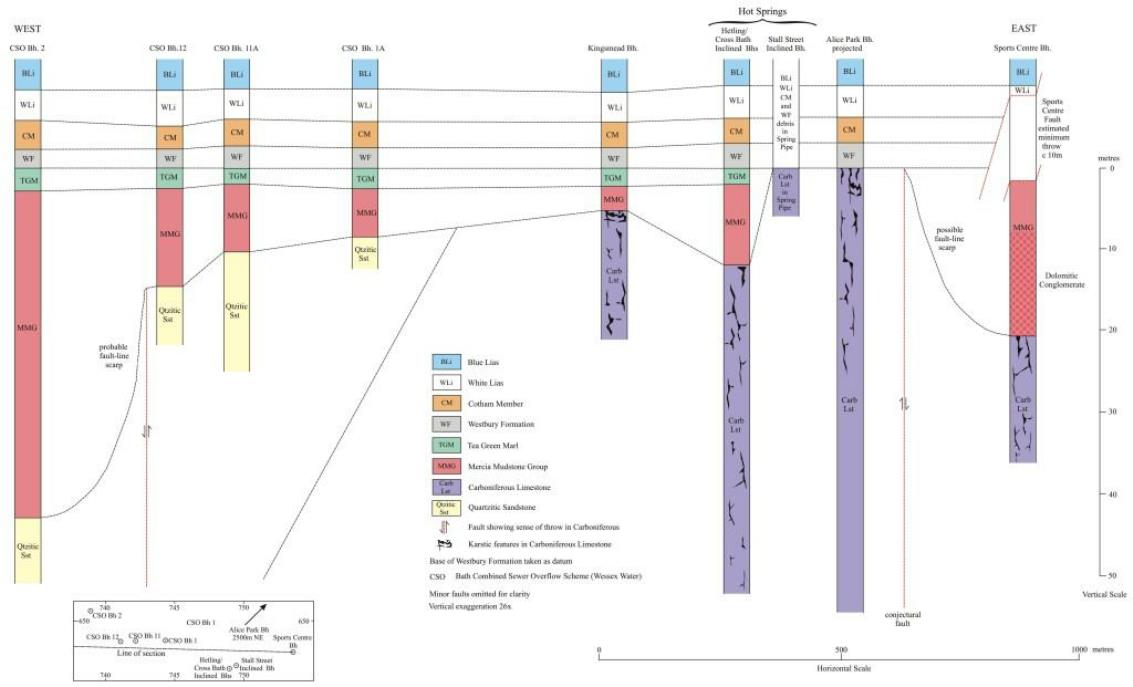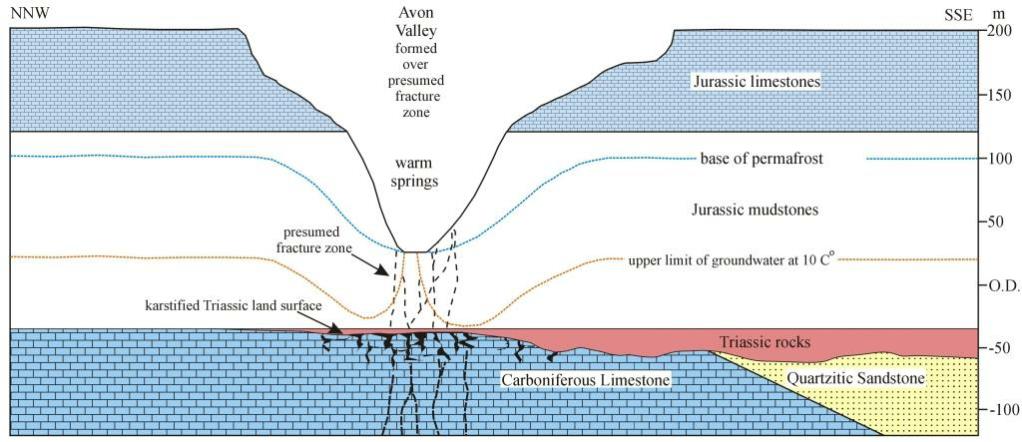

The ancestors of the modern thermal springs at Bath probably formed in the late Pleistocene as warm seepages in the floor of the Avon Valley at a time when the area was subject to a periglacial climate and all the adjacent ground was frozen by permafrost. They evolved into hot springs during the next few thousand years. This mechanism for the formation of the hot springs explains their uniquely (in Britain) high temperature, and why they are confined to such a small area in the Avon Valley. Other proposed hypotheses for their origin have included deeply buried hot igneous rocks. However, there is no geological or geophysical evidence of buried hot rocks: the source of the heat is entirely geothermal.
The deposition of the Carboniferous Limestone in the Bath area was followed by that of the Millstone Grit and Coal Measures. Uplift and erosion during the Variscan Orogeny locally removed the younger deposits and exposed parts of the Carboniferous Limestone to subaerial erosion and solution during the terrestrial environments of the Triassic. The hot springs emerge from a cave system in a limestone knoll that overlooked a desert landscape 200 million years ago.